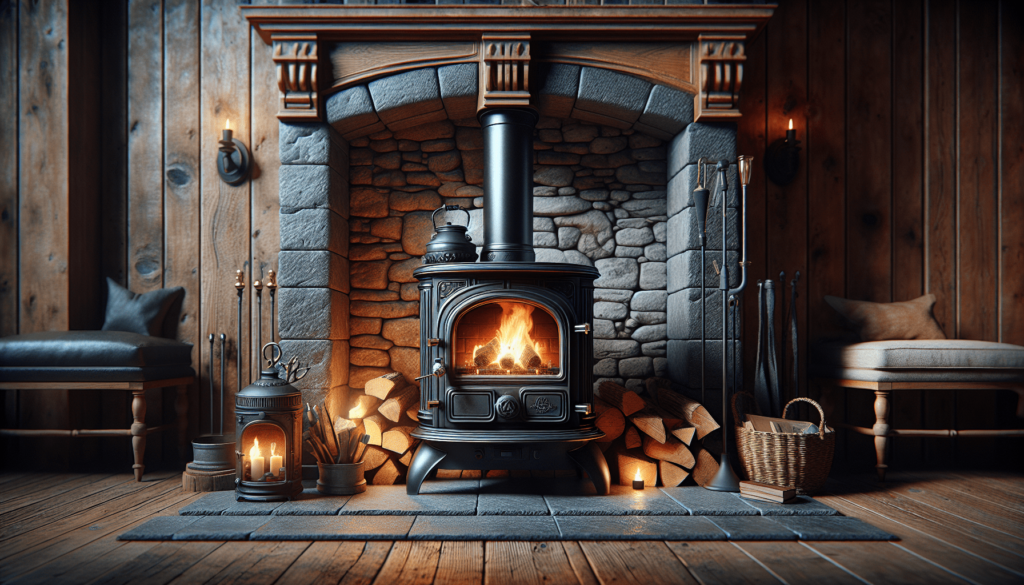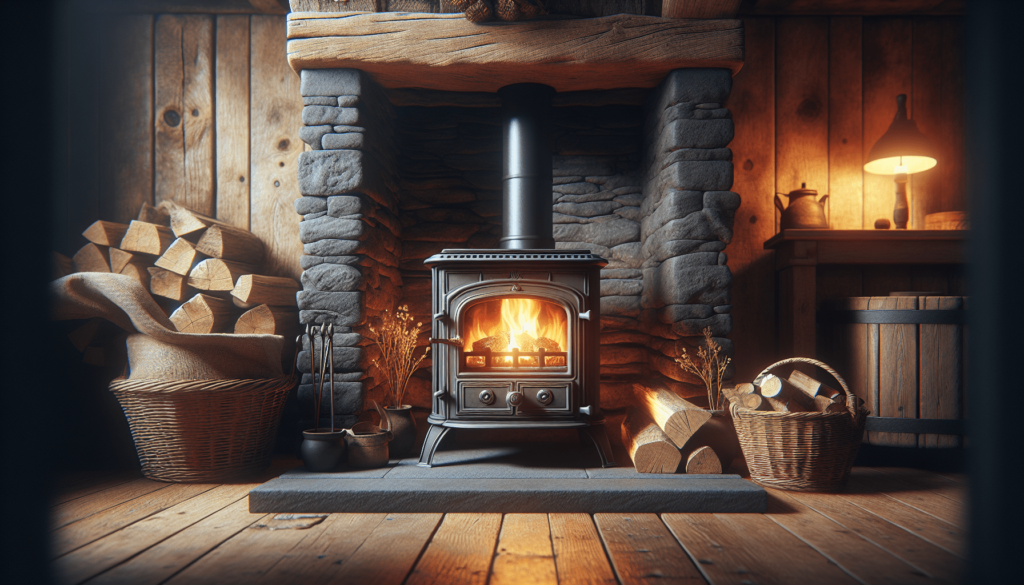Have you ever found yourself wondering, “What is a wood burner called?” If so, you’re not alone. This seemingly simple question can open the door to a fascinating and varied world of terminology, history, and usage. Sit back and let’s chat about everything you didn’t know you needed to know about wood burners.
The Names and Terminologies
When I first thought about wood burners, I was surprised by the multitude of names and terminologies that describe different types and functionalities. Who knew there could be so much variety in equipment designed to burn wood?
Wood Stove
A wood stove, for instance, is probably the most common term you’ve come across. It’s a free-standing stove that burns wood to provide heat. They’re usually made of cast iron or steel and can come in a wide range of styles and sizes. An added perk? Many of these stoves come with a cooking surface on top, which can be a nostalgic throwback to earlier, simpler times.
Fireplace Insert
Then there’s the fireplace insert, which is essentially a wood stove designed to fit into an existing fireplace. It’s a neat way to upgrade an old, inefficient fireplace into a modern heating marvel. By containing the fire in a sealed box, these inserts can significantly reduce heat loss compared to traditional open fireplaces.
Wood-Burning Furnace
Now, if you’ve got a larger space to heat, a wood-burning furnace might be what you’re thinking of. These are often installed in basements or utility rooms and can be connected to your home’s ductwork. In this way, the heat generated extends throughout your entire home, much like a conventional HVAC system.
Pellet Stove
Lastly, though not strictly a wood burner in the purest sense, the pellet stove deserves a mention. While these stoves typically burn compressed wood pellets rather than logs, they offer another efficient means of creating heat. Plus, they’re conveniently automated.
| Common Names for Wood Burners | Description |
|---|---|
| Wood Stove | Free-standing stove, often made of cast iron or steel. |
| Fireplace Insert | A wood stove designed to fit into an existing fireplace. |
| Wood-Burning Furnace | Installed in basements, connected to ductwork for whole-home heating. |
| Pellet Stove | Burns compressed wood pellets; often automated. |
The History and Evolution of Wood Burners
I find it fascinating how technology and necessity shape our homes and lives, and wood burners are no exception. The journey from the open hearth to today’s sophisticated wood-burning systems is quite the story.
Open Hearths
Our ancestors didn’t just stumble upon wood stoves. For the longest time, people relied on open hearths, which were essentially large, open fireplaces. They weren’t just a source of heat but served as the central hub of home life, used for cooking and warmth. While charming in their simplicity, these hearths were notoriously inefficient and required a constant supply of wood.
The Advent of the Wood Stove
It wasn’t until the 16th century that enclosed stoves began to emerge in Europe. These early models weren’t perfect, but the benefits were hard to ignore—they used less wood and produced more heat. By the time the Industrial Revolution rolled around, technological advancements made cast iron wood stoves widely available. Benjamin Franklin, of all people, even designed his own version, known as the Franklin stove, which became incredibly popular for its improved efficiency.
Modern-Day Innovations
Today’s wood burners are a far cry from those early designs. Current models are equipped with advanced features like catalytic converters for cleaner burns, air wash systems that keep the glass door clean, and even smartphone connectivity so you can control your stove remotely. They’re not just functional; they’re also designed to be aesthetically pleasing.

Benefits of Using a Wood Burner
Why would someone in the age of central heating and automated climate control still opt for a wood burner? Turns out, there are several compelling reasons.
Cost-Effectiveness
First off, wood is generally cheaper than electricity, heating oil, and natural gas, especially if you have access to a free or low-cost supply of firewood. Plus, once you make the initial investment in your wood-burning appliance, maintenance and running costs remain relatively low.
Environmental Impact
Believe it or not, burning wood can be more environmentally friendly than using fossil fuels. When managed sustainably, wood is a renewable resource. Advanced wood burners are designed to maximize combustion efficiency, reducing smoke and particulates that contribute to air pollution.
Ambiance and Aesthetics
Let’s not forget the sheer enjoyment of it. There’s something deeply satisfying about watching a fire crackle and dance. The cozy ambiance and comforting warmth a wood stove provides simply can’t be replicated by a thermostat.
Independence and Resilience
A wood burner can be a lifesaver during power outages. With no need for electricity, you can rest assured that your home will remain warm, no matter what Mother Nature throws at you.
Types of Wood for Burning
Knowing what type of wood to burn is another layer of complexity that took me a while to fully comprehend. Not all wood burns the same, and choosing the right type can make a significant difference in efficiency and enjoyment.
Hardwood vs. Softwood
The main distinction is between hardwoods and softwoods.
Hardwoods
Hardwoods like oak, maple, and ash are dense and burn for a long time, producing more heat and less creosote. They’re perfect for maintaining a consistent, prolonged fire.
Softwoods
Softwoods, such as pine and spruce, ignite quickly but burn out just as fast. They’re great for kindling but not ideal for sustaining a long, steady fire.
Seasoning the Wood
Regardless of type, one critical factor is the wood’s moisture content. Freshly cut wood is far too wet to burn efficiently and can create excess smoke and creosote buildup. Seasoned wood—dried for at least six months to a year—is the way to go. It’ll burn hotter and cleaner.
| Type of Wood | Characteristics |
|---|---|
| Oak, Maple, Ash (Hardwoods) | Dense, long-lasting, high heat output, low creosote. |
| Pine, Spruce (Softwoods) | Quick to ignite, burns rapidly, more creosote. |

Installation and Safety Considerations
Now, if you’re thinking of getting your own wood burner, there are a few installation and safety considerations that shouldn’t be overlooked. Here’s where the rubber meets the road, or rather, the fire meets the flue.
Installation Requirements
Proper installation is crucial for safety and efficiency. It’s generally recommended to hire a professional to handle this part. They’ll ensure your stove has adequate clearance from flammable materials, proper venting, and a non-combustible hearth. They’ll also double-check that your chimney is in good condition, as a faulty chimney can lead to dangerous creosote buildup or even chimney fires.
Regular Maintenance
Once installed, regular maintenance is key. Have your chimney inspected and cleaned at least once a year to remove creosote and ash. Check gaskets, seals, and other components regularly for wear and tear. This not only extends the life of your stove but also ensures it operates safely.
Safety Precautions
Never underestimate the importance of safety when dealing with open flames. Keep a fire extinguisher nearby and educate everyone in your household about basic fire safety practices. Install smoke and carbon monoxide detectors if you don’t already have them.
Regulations and Certifications
I’ve also discovered that jumping through regulatory hoops can be less of a drag once you understand the necessity behind them. Different areas have varying rules about wood burners, and it’s essential to be aware of these before making any decisions.
EPA Standards
In the United States, for example, the Environmental Protection Agency (EPA) sets emission standards for wood stoves. Make sure your stove complies with these regulations to minimize harmful pollutants and maximize efficiency.
Local Regulations
Local regulations might be even more specific. Some areas with air quality concerns have “no-burn” days when using wood stoves is prohibited. It’s always a good idea to check with your local authorities for specific rules and guidelines.
| Regulatory Body | Responsibility |
|---|---|
| Environmental Protection Agency (EPA) | Sets emission standards in the U.S. |
| Local Authorities | Specific rules, including “no-burn” days and installation permits. |
Wood Burner Alternatives
We live in a world with countless options and sometimes, exploring alternatives can help clarify what’s best for you. While wood burners have their charms, they’re not the only way to achieve a warm, cozy home.
Gas Stoves
Gas stoves offer an excellent alternative if you love the idea of a stove but prefer something lower maintenance. They’re easy to operate, require less cleaning, and are more straightforward to install than wood burners. On the flip side, they do depend on a continued supply of natural gas or propane.
Electric Fireplaces
These are about as low-effort as it gets. Electric fireplaces offer the cozy aesthetics of a real fire without the hassle of wood, fire-starting, or ash cleanup. Plus, many models come with additional features like adjustable heat settings and even artificial crackling sounds.
Pellet Stoves (Again)
Remember those wood pellet stoves I mentioned? They deserve another shout-out as a hybrid option. They offer the ambiance of wood burning while being as convenient as gas or electric options. You don’t get the same intense manual labor as you would with wood logs, but the effect is remarkably similar.
| Alternative Option | Pros | Cons |
|---|---|---|
| Gas Stoves | Low maintenance, easy operation, no ash cleanup | Dependence on gas supply, less ambiance |
| Electric Fireplaces | No effort, adjustable settings | Less authentic, reliant on electricity |
| Pellet Stoves | Hybrid option, less manual labor | Requires wood pellets, still some maintenance |
Conclusion: What’s in a Name?
So, circling back to the initial question: “What is a wood burner called?” It’s a question that can lead us down a rabbit hole of history, technology, and lifestyle choices. From wood stoves to fireplace inserts, and from the radiant heat of hardwood to the quick blaze of softwood, each name and type brings with it a unique set of attributes and history.
Thinking about how essential wood burners have been throughout history and how they continue to offer modern solutions, I can’t help but appreciate their enduring utility and charm. Regardless of whether you call it a wood stove, a fireplace insert, or even a wood-burning furnace, these heat sources embody a blend of tradition and innovation, melding together comfort and efficiency.
If you ever decide to bring one into your home, may you enjoy the warmth, ambiance, and connection to a simpler past that a wood-burning stove provides. And for the nights you spend cozied up by the fire, recalling the history, terminology, and intricacies of wood burners, you’ll have the satisfying sense that you truly know “what a wood burner is called.”

